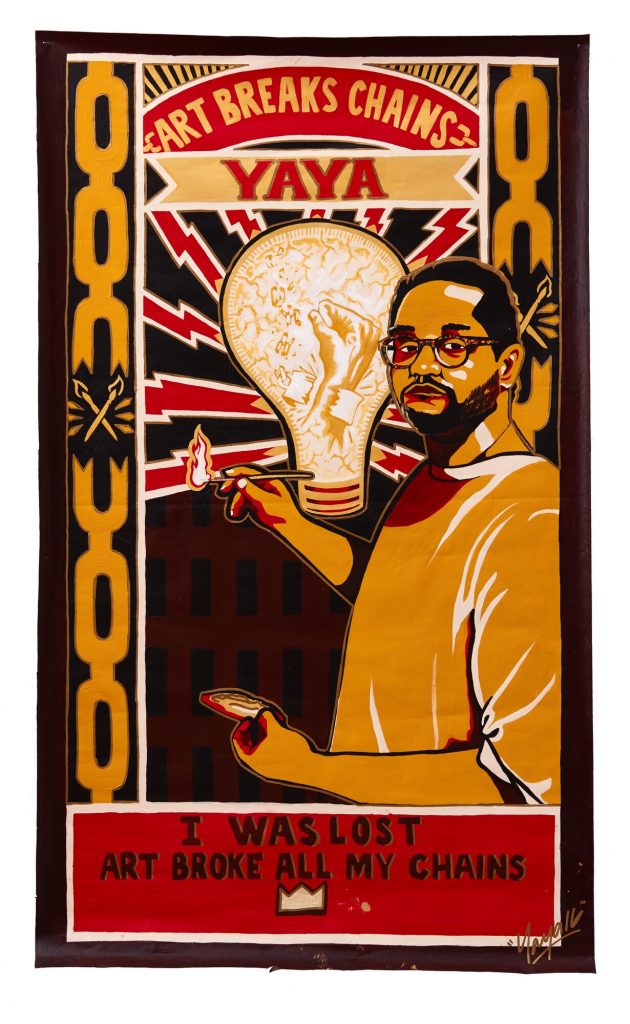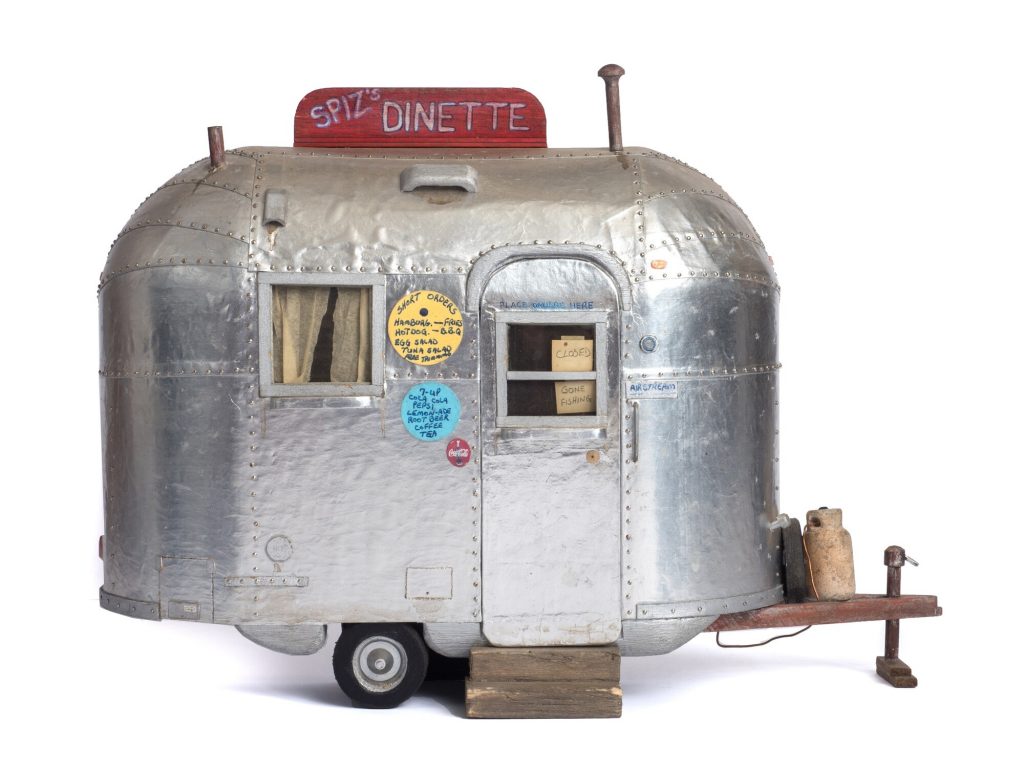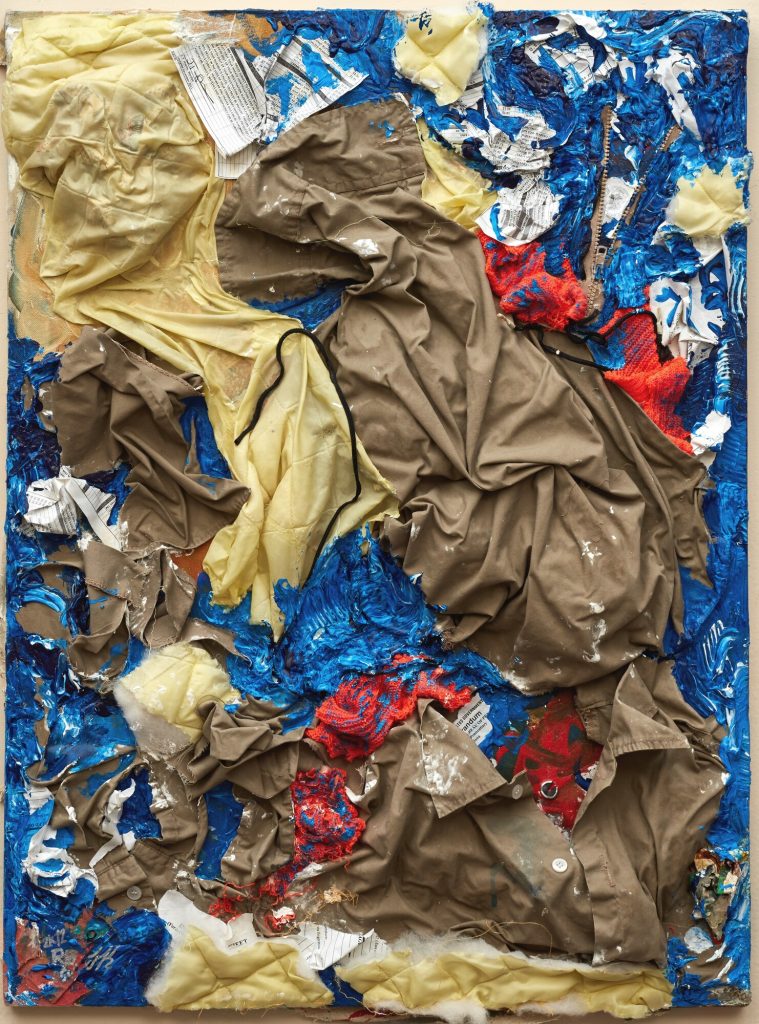Lent 2021, Day 12: Marking Time.

From The Atlantic:
Spiz’s dinette, a toaster-size trailer with a propane tank no bigger than your thumb, was painstakingly crafted during Dean Gillispie’s years of incarceration at an Ohio prison. Gillispie constructed the silver trailer by spreading cigarette-pack foil across notebook cardboard, and used pins taken from the prison sewing shop to hold the whole structure together. The window curtains, made from used tea bags, are partially closed. A tiny sign on the trailer door reads, in nearly microscopic inky script: gone fishing. The whole sculpture invites you to lean closer, to peer through the tea-bag curtains and squint at the sign—only to encounter a message that is a declaration of absence, an ironic claiming of the very leisure time that prison makes impossible. Written from the claustrophobic quarters of a prison cell, the note turns a cliché of leisure into an act of fugitive self-possession.

During two decades of incarceration for crimes he did not commit, Gillispie—raised in rural Ohio by working-class parents who went into tremendous debt to fund the fight for his release—built an entire series of miniature establishments that collectively evoke a sense of small-town nostalgia, including a movie theater (whose marquee advertises I Walked With a Zombie) and a series of shops bearing his childhood nickname: Spiz’s Burger Shack, Spiz’s Scoop City. Many feature the street address 276: Gillispie’s cellblock number. These miniatures represent a nearly sublime form of the art of “mushfake,” prison slang for replicas of outside objects constructed from materials available inside. The bricks of the movie theater were sculpted out of dental compound taken from the prison medical unit. Spiz’s Diner, made from soda cans and cassette-tape cases, was rigged with electricity by a fellow cellblock resident.
Mr. Gillispie was imprisoned for TWO DECADES for crimes HE DID NOT COMMIT. My Lord. Yet, he began using his time to create. This story connects with me on a deep level. While having a chronic illness is NOT the same as prison, my life has become extremely altered by limitations, even more so during this pandemic. Many times, I’ve turned to art as a way of expression and escape, and have found it to be restorative. But enough about me. Back to the story:
Gillispie’s miniatures are daydreams made tangible, salvaging sleek chrome sidings from the austerity of a cigarette economy, and hours of creative labor from the long decades of a prison sentence. With their limited materials, Gillispie’s pieces testify to some of the many freedoms their maker was denied. But their ingenuity testifies to freedoms that can never be fully taken: to imagine, to create, to reconstitute, to survive by way of unexpected beauties. As Gillispie has put it, summing up his relationship with prison authorities: “They were procuring my life and I was procuring product from them.”
When art emerges out of conditions shaped by injustice, inequality, and brutality, we—and by “we,” I specifically mean people viewing the art who are not subject to the conditions under which it was produced—may reflexively expect it to be a transparent vessel delivering the terrible news of its own origins. From that angle, we risk seeing its creators as ethnographers, duty-bound to deliver the particulars of their dehumanization. But not all art that emerges from injustice wants to transcribe it; art can glance obliquely, using stolen sewing pins and tea-bag curtains to suggest longing and determination—to say, You can’t have all of me.
Life, at times, seems to want to crush us. Job loss, cancer, bills, breakups or divorce, sometimes life feels like a cage of hopelessness. However, we are made in the image of God, and within us, I believe, is the divine spark to create. Make some time to do so, through poetry, music, dance, writing, or even coloring. Bring light into the darkness.


